Cryptographer & Encoded Textiles by Raw Color
Coded messages have been bleached into these scarves with a customised printer invented by Dutch graphic designers Raw Color.
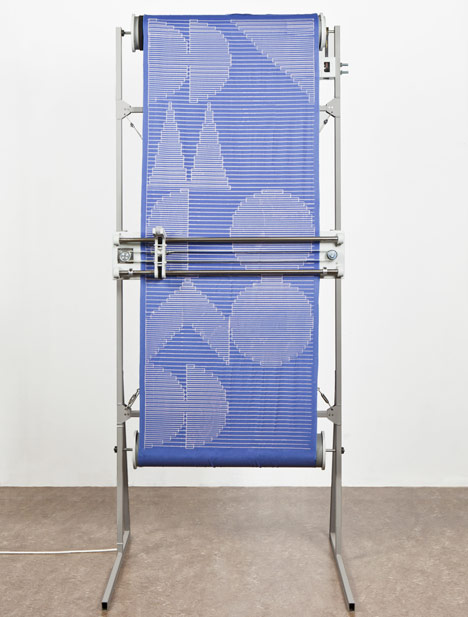
The Cryptographer printer creates patterns by applying bleach to fabric through a pen attached to the print head.
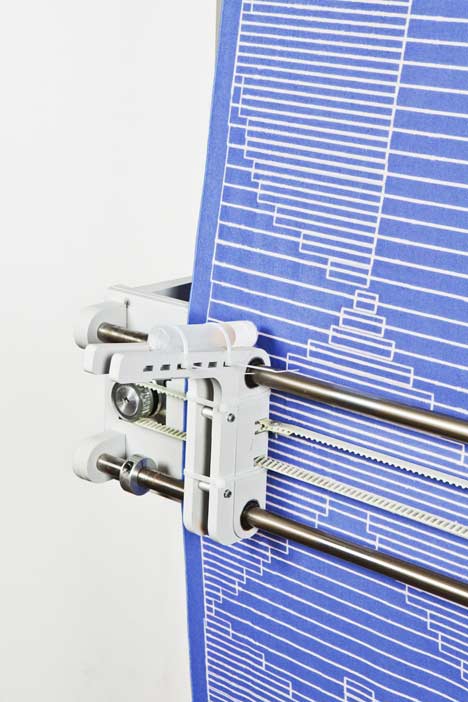
Written messages are coded into a series of icons, which correspond to letters of the alphabet, before being mapped out as a line drawing and sent to the printer.

The scale of the pattern is determined by the number of words in the message, shrinking or expanding to cover the whole scarf.
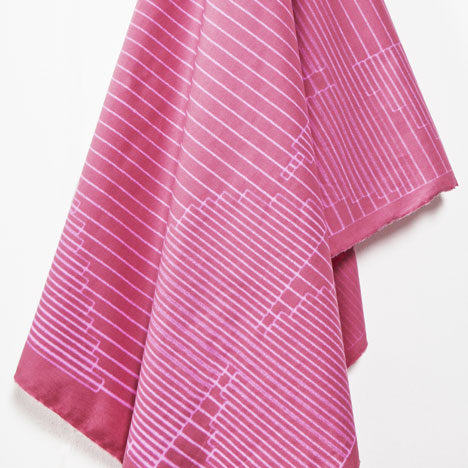
The icons were ordered according to the frequency of each letter in the English language in order to estimate compositions and ensure an even spread of open, closed, round and square icons.
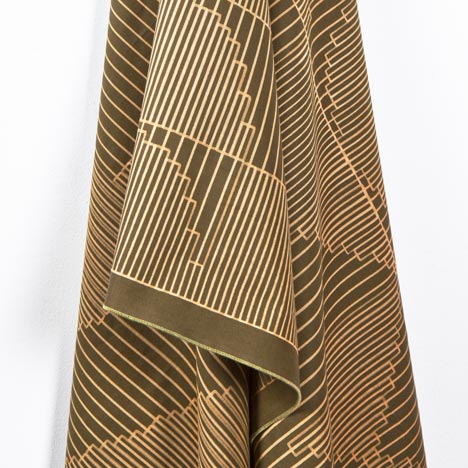
See all our stories about textiles »
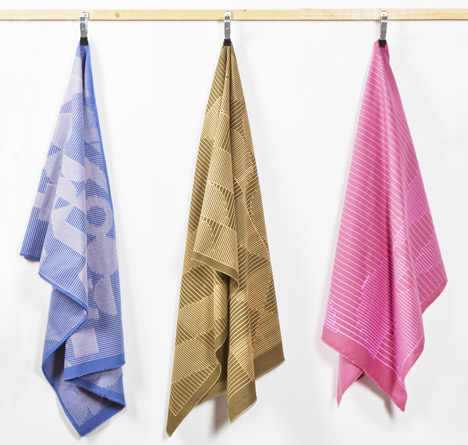
Here's some more text from the designers:
A personal message is more and more often sent digitally. Intangible, floating in the air, only readable on a screen. The Cryptographer generates patterns by translating words into a code. Bleached into fabric, the message becomes tangible. Invisible words with a physical impact. Controlled by text messaging, each character is transformed into a specified icon, resulting in ever-changing patterns depending on the user's input.
The bleach process is applied by a pen attached to the print head of the Cryptographer. Reacting differently on each textile dye, the bleached shades vary. The size and scale of the pattern is determined by the amount of words send to the printer. Creating scarves which contain a pattern that is determined by a personal message.
The icons are sorted by letter frequency in English (etaoinshrdlcumwfgypbvkjxqz), starting with the most commonly used letters. Through this it was possible to estimate compositions and keep a balance between round, square, open and closed shapes.
This project was technically very complex and we could never have done it without the help of dedicated experts. The final software and interface was developed in collaboration with Remon van den Eijnden and Peter Bust. The elementary programming and direct control elements of the engines was done by Bart van der Linden. Studio Watt took care of the engineering and electronics.
The project was presented for the first time at Dutch Invertuals 'Retouched' during Salone del Mobile in Milano from 17-22nd of April 2012.